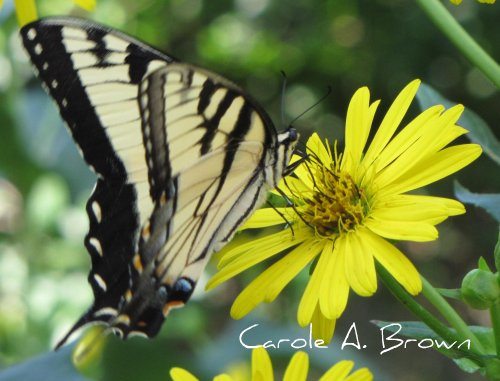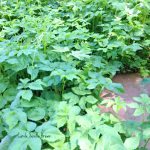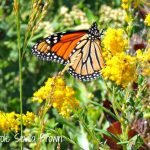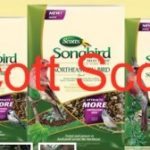When I am consulting with a new client about their Ecosystem Gardening goals, the number one question I am asked is, “What should I plant?” or “Just tell me what to plant and I’ll do it.” But choosing the best plants is dependent on many factors, such as soil type, moisture, amount of sun, and temperature. Take some time to learn these factors for your property. That will help you in choosing the best plants.
By now you know just how passionate I am about native plants for ecosystem gardening, but in the big scheme of things, some native plants far outshine others in the sheer numbers of wildlife that they support. When your focus is to attract wildlife to your garden, choosing the best plants will put you well on your way.
My thanks to Doug Tallamy and Kimberley Shropshire for compiling this list. You can find a portion of this list in Doug’s book, Bringing Nature Home: how native plants sustain wildlife in our gardens. In their research, they focused on how many Lepidoptera (Butterflies and Moths) used each species, but you can be sure that if so many Lepidoptera species use these trees, that all other wildlife finds them just as beneficial.
It is important that you choose species from these families that are native to your area. Use the USDA plants database and check the range maps to choose the most appropriate species.
I’m going to fill out the list with some interesting facts to help you choose the right species for your ecosystem garden.
- Quercus—Oaks support an astounding 543 species of Lepidoptera, including Polyphemus and Imperial moths, Banded Hairstreak, Striped Hairstreak, White M Hairstreak, Juvenal’s Duskywing, and Horace’s Duskywing. There are about 60 native species of Oak in the United States, which are divided into two groups: the white oaks, and the red oaks.
- —Prunus include: beach plum, cherry, chokecherry, peach, plum, sweet cherry, wild plum, and almond. These plants support 456 Lepidoptera species, including Eastern Tiger Swallowtail, Coral Hairstreak, Striped Hairstreak, Red-spotted Purple, Cecropia moth, Promethea Moth, and Hummingbird Clearwing.
- Salix—455 butterfly and moth species use Willows. Including Mourning Cloak, Red-spotted Purple, and Viceroy.
- Betula—Birch are used by 411 species, including Luna Moth, Eastern Tiger Swallowtail, Cecropia Moth, and Polyphemus Moth.
- Populus—367 species use aspen, cottonwood, and poplar. These include Eastern Tiger Swallowtail, Mourning Cloak, and Twinspot Sphinx Moth,
- Malus—crabapple and apple are used by 308 species, inclucing Io Moth, and Cecropia Moth.
- Acer—Maple and boxelder are used by 297 species, including Io Moth, Saddled Prominent, Luna Moth, and Imperial Moth. Please do not plant Norway Maples. They are highly invasive.
- Vaccinium—cranberry and blueberry are used by 294 species, including Brown Elfin, Spring Azure, and Striped Hairstreak
- Alnus—Alder is used by 255 species including Orange Sulphur, Eastern Tiger Swallowtail, and Giant Swallowtail.
- Carya—Hickory, pecan, pignut, and bitternut are used by 235 Lepidoptera species, including Io Moth, Polyphemus Moth, Luna Moth, Pale Tussock Moth, and American Dagger Moth.
You can’t go wrong by adding one or more of these plants to your Ecosystem Garden. Which ones do you have?
More about native plants here:
What makes a plant invasive: the first lesson in what NOT to plant
Top 10 Best Hebaceous Plants for Ecosystem Gardening
Leave Us Your Comments Below!
Click the Submit Your Comments button below to leave us your comments or questions!
More From Ecosystem Gardening:
Submit your review | |








